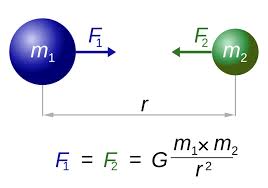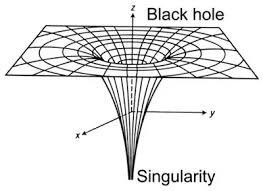 Evolution’s Position: I want to make the following very few observations from Cosmological Evolutions as it relates to gravity:
Evolution’s Position: I want to make the following very few observations from Cosmological Evolutions as it relates to gravity:
- All matter came from a small point of singularity smaller than an electron – According to Space.com in their article “Great Mysteries: How Did the Universe Begin” they write: “According to the standard Big Bang model, the universe was born during a period of inflation that began about 13.7 billion years ago. Like a rapidly expanding balloon, it swelled from a size smaller than an electron to nearly its current size within a tiny fraction of a second.”
- Everything in the universe came a point of infinite denseness – An article entitled What is the Big Bang Theory in Space.com says: “Around 13.7 billion years ago, everything in the entire universe was condensed in an infinitesimally small singularity, a point of infinite denseness and heat.”
- Hydrogen and helium are built into stars by gravity – An article from NASA.com entitled, What is Your Cosmic Connection to the Elements? says: “Most of the hydrogen and helium in the Universe were created in the moments after the Big Bang. Heavier elements came later. Small stars fuse hydrogen into helium, and then fuse helium into carbon and nitrogen.“
- Gravity compressed gas into stars – An article by Scientific America entitled How is a star born? says: “A star is born when atoms of light elements are squeezed under enough pressure for their nuclei to undergo fusion. All stars are the result of a balance of forces: the force of gravity compresses atoms in interstellar gas until the fusion reactions begin.”
- Stars began as hydrogen and helium – An article by the Webb Telescope entitled What were the first stars made of? says: “Astronomers know that the first stars, officially known as Population III stars, must have been made almost solely of hydrogen and helium—the elements that formed as a direct result of the big bang. They would have contained none of the heavier elements like carbon, nitrogen, oxygen, and iron that are found in stars shining today.”

I am confused about how hydrogen and helium formed stars.
- Stars began with hydrogen and helium clumping – An article by NASA entitled Star Basics, says: “Stars form in large clouds of gas and dust called molecular clouds. Molecular clouds range from 1,000 to 10 million times the mass of the Sun and can span as much as hundreds of light-years. Molecular clouds are cold which causes gas to clump, creating high-density pockets.“
- Setting aside the science and matter of Schwarzschild Radius which states that the mass that dense must collapse into a black hole rather that “swell”. The universe had a beginning and if that beginning point was that small and dense, how would anything escape or expand (swell) into the universe we see today?
- What does an infinitesimally small singularity that is a point of infinite denseness sound like? A black hole? How would anything escape the infinite denseness? Would this mean infinite gravity?
- What does “after the big bang” mean? After creation of hydrogen and helium, how did it form a small star? There seems to be a significant gap between creation of hydrogen and helium and small stars the fuse these two elements into carbon and nitrogen. No mention of gravity here.
- Can gravity really compress a gas? How did gravity compress atoms of interstellar gas when gravity is a weak force and gasses bounce around.
- Can hydrogen and helium “clump?
- What “dust” was created and what elements did it consist of. While we don’t know How are light elements squeezed or compressed to start a star? By what force? How did gases create their own gravity when its nature is to bounce around and collide?
 Law of Science’s Position:
We know four things about the Law of Gravity as far as its ability to form a star.
Law of Science’s Position:
We know four things about the Law of Gravity as far as its ability to form a star.
- Gravity is a very weak force (if a “force” at all). An article from Phys.org entitled How strong is the force of gravity on Earth? sums it up. “Gravity is also one of the four fundamental forces which govern all interactions in nature (along with weak nuclear force, strong nuclear force, and electromagnetism). Of these forces, gravity is the weakest, being approximately 1038 times weaker than the strong nuclear force, 1036 times weaker than the electromagnetic force and 1029 times weaker than the weak nuclear force. As a consequence, gravity has a negligible influence on matter at the smallest of scales (i.e. subatomic particles).” Hydrogen and Helium atoms do not have very much mass to attach each other or bend space, which ever way you look at it.
- Gravity is based on the distance between objects. If the distance between two Hydrogen molecules doubles, the gravitational attraction is 1/4 of what it was. Can gravity overcome the momentum of a speeding atom?
- Earth’s gravity can not keep Hydrogen and Helium in its atmosphere. In an article by the Swiss National Science Foundation entitled Leaking atmospheres seal the fate of planets “All planets lose their atmosphere. Each day, around 90 tonnes of hydrogen and helium escape from Earth in the direction of space – but don’t panic; at this rate, we’ve still got enough to last another 150 billion years.” An article in the American Chemical Society (ACS) entitled Why is Helium Endangered Element says, “Once helium is released in the atmosphere, it will continue rising until it escapes into space, making it the only truly unrecoverable element.“
- Nature of a gas is explained in this article in Live Science article entitled Properties of Matter: Gases says: “Gas is a state of matter that has no fixed shape and no fixed volume. Gases have a lower density than other states of matter, such as solids and liquids. There is a great deal of empty space between particles, which have a lot of kinetic energy and aren’t particularly attracted to one another. Gas particles move very fast and collide with one another, causing them to diffuse, or spread out until they are evenly distributed throughout the volume of the container.” NASA says in its article entitled Gas Properties Definitions says: “In any gas, we have a very large number of molecules that are only weakly attracted to each other and are free to move about in space.”
